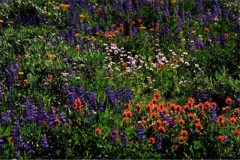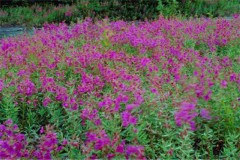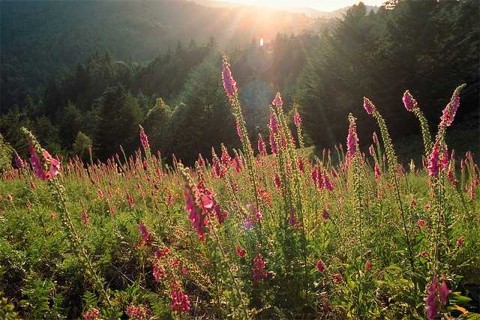
In texture, color, and shape, ferns proclaim themselves as the perfection of green leaf forms. Where we find them in nature they are so thoroughly a muted part of the total landscape that we accept them without a special note. Ferns remain so much a part of the world of nature that they are not suited to the formal garden with border perennials. They belong in the company of spring bulbs and those flowering plants that still wear some of the air of thier original wildness. Used thus in conjunction with early bulbs and spring flowers, ferns can fill shaded corners beneath a flowering tree or in the flowerbed on the shady side of the house. The first uncurling fiddleheads neatly accompany the early ruch of blossoming wild flowers and such bulbs as dafodils, jonquils, and narcissuses. When the flowers fade and thier foliage begins to wilt, then the expanding fern fronds provide fresh and continual greenness. Except for a few rock-loving species, ferns generally need a situation in the garden where the soil is not scorched by the sun. They demand a light soil rich in humus, the kind that takes nature years to make in the woods. The soil can be provided in the garden by the incorporation of generous amounts of commercial peat. In such a soil ferns of many sizes and kinds will grow happily together; but some, because of their texture and form and habit of growth, are more desirable than others in a garden.
The Woodferns, with their ranges of sizes and leaf shapes, offer perhaps the most attractive and adaptable of all of the ferns. There is not an unpleasing fern in the group. They all grow from a central from a crown and hold their freshness throughout the summer.
Of easy culture in rich, moist, shaded dardens, the Woodferns (Leatherleaf) provide variety and neatness almost all one could ask for in the garden.
Another with its own special charm is the Lady Fern, which is easily managed and is suitable for growing among mixed flower backgrounds. However, it has a tendency to become a little tattered rather early.
For contrast of shape and texture there is perhaps no fern to eaqual the Maidenhair. From the magic of early unwrapping of the frond in spring to the full swirling design of the mature leaf, the Maidenhair asserts its loveliness amid the delicate flowers of spring or the lushness of summer. In rich soil and shade a clump of Maidenhair will increase its compact growth sometimes to the pint of needing restraint. You can easily bring the rootmass in bounds by slicing off with a shovel as much of the clump as you wish, and using the removed clumps elsewhere.
.

